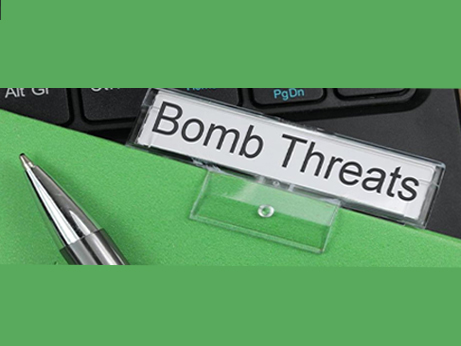Importance of Training for Schools Related to Bomb Threats: Staying Active Without Panic

In today's world, the safety and security of students and staff in schools are of paramount importance. One critical aspect of school safety is being prepared for bomb threats. Although bomb threats are relatively rare, they can have a significant impact on the safety and well-being of everyone involved. Proper training for school personnel and students on how to respond to such threats is essential. Here’s why this training is crucial and how it can be conducted effectively without causing panic.
The Importance of Training
1. Ensuring Safety and Preparedness
✦ Bomb threats can create chaos and fear. Training equips school staff and students with the knowledge and skills needed to respond effectively and safely.
✦ Preparedness reduces the likelihood of injuries and fatalities in the event of an actual threat.
2. Reducing Panic and Anxiety
✦ When individuals know what to do, they are less likely to panic. Training provides a clear plan of action, which can help maintain calm and order.
✦ It helps build confidence in the ability to handle emergencies, which can alleviate anxiety.
3. Improving Coordination with Emergency Services
✦ Schools need to work closely with local law enforcement and emergency responders. Training ensures that everyone is on the same page and can coordinate effectively.
✦ It facilitates smoother and quicker evacuation processes, if necessary.
4. Legal and Ethical Responsibility
✦ Schools have a legal and ethical duty to protect students and staff. Proper training is part of fulfilling this responsibility.
✦ It ensures compliance with local safety regulations and standards.
Key Components of Effective Bomb Threat Training
1. Awareness and Education
✦ Teach students and staff about the nature of bomb threats and the importance of taking them seriously.
✦ Provide information on the signs of suspicious packages or activities.
2. Clear Protocols and Procedures
✦ Establish and communicate clear protocols for responding to a bomb threat. This includes reporting procedures, evacuation plans, and lockdown measures.
✦ Ensure everyone knows their specific roles and responsibilities during an emergency.
3. Regular Drills and Simulations
✦ Conduct regular drills to practice the response to a bomb threat. These should be done in a controlled manner to avoid unnecessary fear.
✦ Simulations can help identify potential issues and areas for improvement in the response plan.
4. Communication Strategies
✦ Develop effective communication strategies for informing students, staff, and parents during and after a bomb threat.
✦ Ensure that communication is clear, concise, and provides the necessary instructions without causing alarm.
5. Psychological Support
✦ Provide access to psychological support for students and staff who may be affected by the threat.
✦ Train staff on how to offer emotional support and reassurance during and after an incident.
Staying Active Without Panic
1. Empowerment Through Knowledge
✦ Knowledge is power. Educate students and staff about the steps they can take to stay safe, which can reduce feelings of helplessness.
✦ Encourage active participation in safety drills and discussions.
2. Creating a Supportive Environment
✦ Foster a supportive school environment where students feel comfortable discussing their fears and concerns.
✦ Provide resources such as counseling services and peer support groups.
3. Emphasizing Calm Leadership
✦ Train school leaders and staff to remain calm and composed during an emergency. Their demeanor can greatly influence the reactions of students.
✦ Practice stress-reduction techniques that can be used during high-stress situations.
4. Building a Culture of Preparedness
✦ Make safety and preparedness part of the school culture. Regularly update and review safety protocols and ensure ongoing training.
✦ Celebrate successes and improvements in safety practices to reinforce their importance.
Conclusion
Training for bomb threats is an essential component of school safety. By preparing students and staff through education, clear protocols, regular drills, effective communication, and psychological support, schools can respond to threats actively and efficiently without inducing panic. Creating a culture of preparedness and calm leadership ensures that everyone knows what to do and can maintain composure in the face of potential threats, ultimately safeguarding the well-being of the entire school community.
(This "Fire Safety Blogs" Published in August 2024 Edition)













